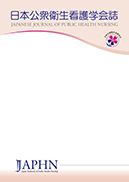Volume 5, Issue 2
Displaying 1-7 of 7 articles from this issue
- |<
- <
- 1
- >
- >|
Foreword
-
2016Volume 5Issue 2 Pages 115
Published: 2016
Released on J-STAGE: September 02, 2016
Download PDF (463K)
Research Article
-
2016Volume 5Issue 2 Pages 116-125
Published: 2016
Released on J-STAGE: September 02, 2016
Download PDF (405K) Full view HTML -
2016Volume 5Issue 2 Pages 126-135
Published: 2016
Released on J-STAGE: September 02, 2016
Download PDF (312K) Full view HTML -
2016Volume 5Issue 2 Pages 136-143
Published: 2016
Released on J-STAGE: September 02, 2016
Download PDF (323K) Full view HTML -
2016Volume 5Issue 2 Pages 144-153
Published: 2016
Released on J-STAGE: September 02, 2016
Download PDF (347K) Full view HTML -
2016Volume 5Issue 2 Pages 154-164
Published: 2016
Released on J-STAGE: September 02, 2016
Download PDF (350K) Full view HTML -
2016Volume 5Issue 2 Pages 165-173
Published: 2016
Released on J-STAGE: September 02, 2016
Download PDF (457K) Full view HTML
- |<
- <
- 1
- >
- >|
